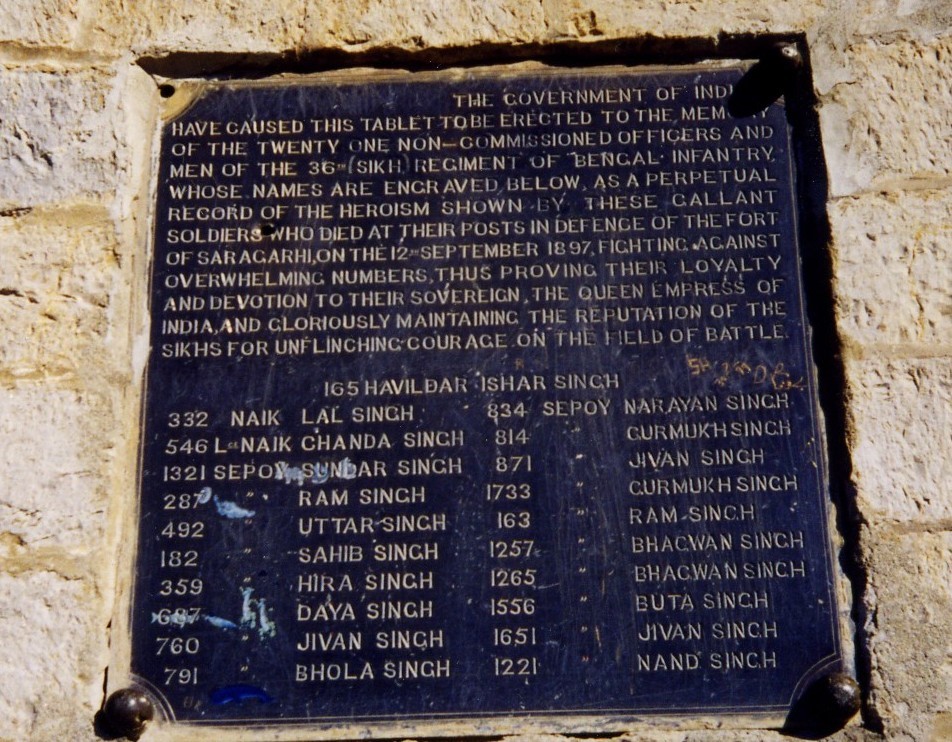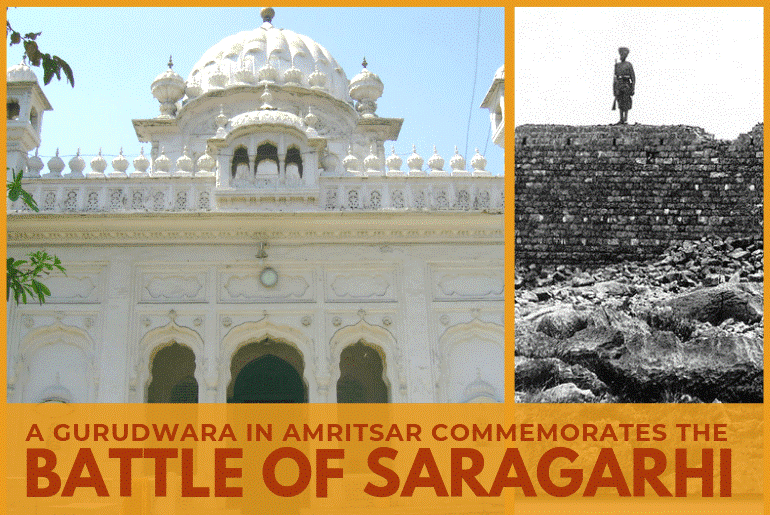Prof. (Dr) Surjit Singh Bhatti (Retd.), Guru Nanak Dev University, Amritsar
The famous Battle of Saragarhi was fought between 21 British Indian Sikh soldiers and Afghans, estimated between 10,000 and 12,000, who were accompanied by Orakzai and Afridi tribesmen. The soldiers in the fort, who were all Sikhs led by a Junior Officer, Ishar Singh, chose to fight to death, defying the British Colonel who had ordered them to leave Saragarhi and save their lives. This is considered by war historians as one of world’s greatest last stands. The 4th battalion of the Sikh Regiment of Indian Army commemorates the battle every year on 12 September, as Saragarhi Day.

Saragarhi was a small village in the border district of Kohat, situated on the Samana mountain Range, in present-day Pakistan. The British had consolidated some forts, originally built by Maharaja Ranjit Singh, ruler of the once mighty Sikh Empire. Two of these forts were Fort Lockhart (on Hindukush mountains), and Fort Gulistan (on the Suleiman mountain range ), situated a few miles apart. Due to the forts not being visible to each other, Saragarhi was created midway, as a communication post with a (heliographic) signaling tower.
A general uprising by the Afghans began there in 1897 and many daring attempts were made by Pashtuns to capture these forts. These were effectively thwarted by the 36th Sikhs unit. Afridi tribesmen, allied with the Afghans, attacked Fort Gulistan twice but both the attacks were repulsed. A relief column from Fort Lockhart, reinforced the signaling detachment positioned at Saragarhi, increased its strength to 21, with three junior Sikh officers and eighteen other Sikh ranks.
The Sikhs never surrender, they fight
More than 10,000 Afghans reached the post at Saragarhi on 12th September 1897. The Sikh defenders sent signals to Colonel Haughton, stationed in Fort Lockhart, that they were under attack. Haughton stated he could not send immediate help to Saragarhi as all routes were blocked by the invaders. He asked the 21 Sikhs at Saragarhi to either surrender or leave the post and save their lives. However, the Sikh soldiers in Saragarhi unanimously decided to fight to the last to prevent the enemy from reaching the two main forts. The Afghans broke a portion of the wall of the Saragarhi picket. All the 21 Sikhs rejected the promises made by the Pashtuns to hoodwink them to surrender. Later, the wall was breached, and the fiercest-ever hand-to-hand fighting ensued between the 21 Sikhs and the 10,000 Afghans.
All but one of the Sikh soldiers were killed one by one while fighting with their outdated weapons. The last Sikh soldier communicated the battle situation to their Colonel. He alone killed 20 tribal mercenaries. The Pashtuns set fire to the Saragarhi post to kill him. As he was dying, he repeated the Sikh battle cry “Bole So Nihal, Sat Sri Akal“. Having destroyed Saragarhi, the Afghans turned to Fort Gulistan, but were delayed too long and that fort could not be captured. The Pashtuns had lost about 600 killed by the 21 Sikh soldiers.
Weapons given by the British to all the British Indian troops (including these 21 Sikhs) were of an older and outdated generation, having an effective range of 100 yards only. Compared to this, much better and more effective arms were issued to the British troops. This was intentionally done after the Indian Mutiny of 1857, to prevent any further mutinies against the British. The Afghans used the copies of Martini-Henry rifles having an effective range of 400 yards (maximum 1900 yards) and could fire 12 rounds per minute. These guns were made by their experienced Afridi Khyber Pass tribal gunsmiths and were available freely to Afghan, Pashtun, Afridi, other tribal and mercenary fighters.
Commemorative Tablet by the British Government
Names of the 21 men of the 36 Sikh Infantry Regiment were engraved as a record on a Tablet by the British in 1898. It speaks of the heroism shown by these gallant soldiers who died at their posts defending the fort of Saragarhi, on the 12th September 1897. They died fighting against overwhelming numbers, thus upholding the traditional reputation of the Sikhs for unflinching courage on the battlefield. According to the Sikh soldiers they did not fight on the orders of their British Commander (who had asked them to leave the Fort), but they fought for their own honor and the Honor of their Guru.

India’s Unique, Highest Order of Merit
All the 21 Sikh soldiers who died in the Battle of Saragarhi were from Punjab and were posthumously awarded the Indian Order of Merit, the highest gallantry award which is the equivalent of the British Victoria Cross and today’s Param Vir Chakra awarded by the President of India. Never before or since has a body of troops, that is, all of them, won the highest gallantry awards in a single action. It is indeed a singularly unique action in the annals of Indian Military History, where the Sikhs and Afghans were in the ratio of 1: 500.
Two Memorial Gurudwaras
To commemorate these men the British Government of India built two Saragarhi Memorial Gurudwaras: one in Amritsar, near Golden Temple, and another in Firozepur Cantonment. This brave action at Saragarhi is taught to students the world over and particularly in France and England. British Parliament had paid homage to the brave fallen soldiers. Saragarhi was the subject of films made by several filmmakers. The battle has been compared to the Battle of Thermopylae, where a small Greek force faced a large Persian army in 480 BC, fighting to the last man against a disproportionate number of enemies.

The Historic Saragarhi Commemorative Gurudwara built by the British Government of India at Ferozepur Cantonment in 1904.
Saragarhi Memorial Gurudwara built by the British Government of India in 1902 at Amritsar. A similar monument was erected at Saragarhi.

Highly informative and well researched article. Lucid writing style.
LikeLike